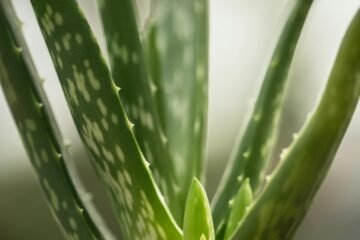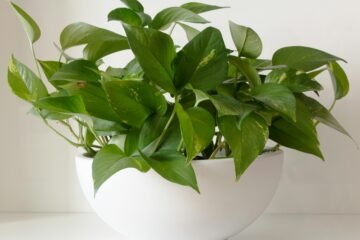Peace Lily (Spathiphyllum) are the most popular house plant due to their attractive dark foliage and contracting white flowers, easy growing do best in low light and variety of cultivars available for different sizes.
The peace lily is a flowering tropical plant from the Spathiphyllum genus of about 47 species of monocotyledons flowering plants in the family Araceae.Spathiphyllum plants are typically propagate by plant tissue culture. When grown in the garden in the tropical and subtropical climates where they are hardly, peace lilies are normally planted in the spring while it is still cool.Peace lilies have large, glossy, oval leaves. They typically bloom in the spring. A healthy peace lily might bloom twice a year.
Interesting Part
Like many plants, peace lilies carry symbolism associated with sympathy, healing, hope, purity and naturally peace. I mostly give this plant as a gift to my most carrying and loving person.
Common Name Peace lily, spath lily
Botanical Name Spathiphyllum spp.
Family Araceae
Plant Type Perennial
Mature Size 1–4 ft. tall, 1–4 ft. wide (indoors), up to 6 ft. tall (outdoors)
Sun Exposure Partial
Soil Type Moist but well-drained
Soil pH Acidic
Bloom Time Spring
Flower Color White, yellow
Hardiness Zones 11–12 (USDA)
Native Area Central America, Asia
Toxicity Toxic to pets and people
How To Care Peace Lily
Peace lilies are not true lilies. They are tropical, evergreen plants in the Arum family, native to tropical Central and South America. Peace lilies are generally grown as a potted houseplant in the United States. If you have potted peace lilies, you can move them outside during summer months.
Caring for a peace lily indoors is relatively simple. Provide your plant moderately moist soil and filtered sunlight, along with consistently temperature conditions.
Photo by Karolina Grabowska
Light
A peace lily needs indirect sunlight. It’s happy in low light, it’s their natural habitat.
But Peace Lilies indoor plants need some more light that’s why you should place them beside the window.
Soil
Peace Lilies are tropical forest plants. They love loose potting mix that contains plenty of organic matter. Because tropical forest soil has large amounts of organic matter. Always try to maintain plants’ natural soil mix. It keeps the plant happy.
Water
Peace lily prefers underwater. It’s not the numbers that matters. Keep the soil lightly moist to the touch but not overly saturated. Peace lilies can tolerate short periods of dry soil.
- Tip
If you see your peace lilies leaves start to droop that means you plants are thirsty.
Humidity
Peace lilies love high humidity. Place your plant in a place where humidity levels are high. It will keep you plant happy.
Fertilizing
Peace lilies appreciate frequent feedings, which result in the strongest plant and seasonal blooming. Feed your peace lily with a balanced liquid fertilizer diluted to half strength every 4-6 weeks during the growing season (spring and summer). Avoid fertilizing during the winter months when growth slows down.
Types of Peace Lilies
- Spathiphyllum ’Power Petite’: A small varietal that grows to only about 15 inches
- S. ‘Mauna Loa Supreme’: A very common variety that grows to be between 3 to 4 feet tall, with leaves that are up to 9 inches wide
- S. ‘Sensation’: The largest peace lily varietal, which reaches up to 6 feet in height with broad, 20-inch long leaves
- S. ‘Mojo’: A striking, large varietal with vibrant green leaves
- S. ‘Golden Delicious’: A varietal that features new growth with stunning golden-green color
- S. ‘Starlight‘: A varietal with narrow leaves that have wavy margins. It’s also known for having multiple blooms, with as many as 20 flowers on a single plant
How To Propagate Peace Lily
- If you see your peace lilies root coming out from the pot or from the drainage holes and other thing is your plant soil getting dry too fast then you should repot your plant.
- Report your plant in a pot twice larger than the previous one. It will help your plant root from unnecessary stress and it will grow happily.
- Eventually the peace lily may grow too large in a pot, at this point you can divide. Remove the plant from its pot, take a Sharp knife and divide them, be careful when you divide, don’t push it hard because plant stems can be hurt.
- Pot the divide part in a pot with moist soil mix with large amount of natural matters and water them.
Is the Peace Lily Toxic to Cats and Dogs?
Yes, peace lilies are mildly toxic.These plants are free of most diseases and pests that can plague houseplants.
How Get Peace Lily to Bloom
Photo by cameo
Peace lilies are notoriously difficult when it comes to blooming. Sometimes even the happiest, healthiest plants don’t bloom outside of their natural rainforest environment.
Expect your peace lily to show off its familiar white blooms in the spring. (Technically, the bloom isn’t a flower, but a bract, or modified leaf, just like a poinsettia.) Some very happy plants may bloom again in fall. After your bloom fades, you can remove spent blooms by cutting off at the base of the blooming stem. The plant won’t bloom again in the same spot.
Common Problems With Peace Lily
Curling Leaves
Curled, pale leaves indicate that the plant receives too much sunlight.In either case, the plant should be moved to a shadier location.
Browning Tips
You might notice browning on your peace lily’s leaf tips. This can be due to too much or too little water, as well as poor soil drainage. It also can arise due to insufficient humidity.




0 Comments